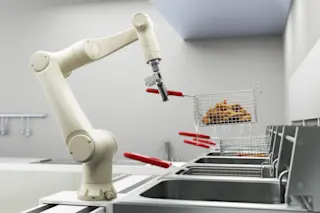The humanoid robot HRP2 made by a team from Tokyo participated in the 2015 DARPA Robotic Challenge. Credit: DARPA Half a billion years ago, Earth's animal life rapidly evolved during the event known as the Cambrian explosion. In the future, growing swarms of robots all talking with one another could spark a similar "Cambrian explosion" for robotic evolution. A robotics expert who has worked for the U.S. military recently published a paper on the technological changes that could rapidly spawn the next generation of robots powered by advanced artificial intelligence. He also weighs the consequences of robots rapidly replacing huge numbers of human workers. Two technologies could play the biggest roles in rapid robot and AI evolution, according to Gill Pratt, who has served as robotics program manager for the U.S. Defense Advanced Research Projects Agency (DARPA). First, "Cloud Robotics" could allow robots to share experiences and knowledge through wireless ...
What a Robot 'Cambrian Explosion' Means
Explore the Cambrian explosion of robotics and its impact on robot workers replacing human jobs in a rapidly evolving economy.
More on Discover
Stay Curious
SubscribeTo The Magazine
Save up to 40% off the cover price when you subscribe to Discover magazine.
Subscribe













